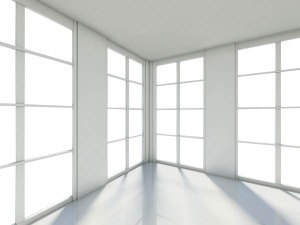SMART energy with window film
Heating and cooling is the number-one offender for energy consumption and costs in the home. And according to the Department of Energy, as much as one-third of the average home’s heat loss occurs through windows and doors. The idea is to retain heat in winter comfort, and keep it out in summer. It’s not always an easy task with that summer sun blasting through barely defensible windows.
Caulking and weather-stripping are by far the best efficiency upgrades you can perform on a window. Air can move much faster and freer through an open crack or punctured seal than through window glass. But glass is not impermeable, and barring any open holes in the home, is the biggest reason for solar heat gain and rising cooling costs in the summer, especially in warm climates with long cooling seasons.
SMART Window films are designed to allow in visible light while blocking infrared light, thus minimizing heat gain in summer and often helping to hold in warm air in winter. In addition to caulking and weather-stripping, applying window films is one of the easiest, cheapest and highly rewarding energy efficiency upgrades you can make to your home. And in many cases, you can apply the coating or film yourself. However, for maximum effectiveness and aesthetic quality, it’s usually advisable to consult a contractor. Some films are manufactured and designed to be self-installed.
Where to Use Window Films

Not every window in the home should have a window film. East- and west-facing windows are the best candidates, as they see summer sun from dawn to dusk. South-facing windows are possible candidates, although the film, even if it helps to hold warm air in during winter, may block solar heat gain in the cold months when the sun is in the low southern sky, thus offsetting efficiency gains realized in the summer. North-facing windows almost never need window films.
Tinted Window Films
Tinted films are old technology. They utilize a dye or pigment that darkens the window and actually absorbs light waves. This causes the dye to warm up and unfortunately still allows some of the heat to pass to the interior room. They also block a lot of visible light from entering, increasing the need for artificial lighting and further nullifying energy savings. These days, most homeowners and window manufacturers have moved on to new low-E films.
Low-Emissivity (Low-E) Films
By far the most eco-friendly window film in terms of effectiveness, low-e films are fast becoming a standard in new window manufacturing. These low-E films help keep you warm in the winter and cool in the summer, and are currently the sun-stopping juggernauts of energy efficient window products.
Low-E films use special metallic coatings so thin that you can see through them. They are designed to allow maximum visible light transmittance while blocking infrared and ultraviolet light (sources of solar heat gain). While no window film can do this perfectly, low-E films are the best to date, allowing as much as 80 percent of visible light to enter while blocking up to 60 percent of UV and infrared light.
High-Reflectivity Window Films
The best films for blocking summer heat gain are reflective window films. They are silver and mirror-like, stemming from the metal oxide used in their production, and are more effective than transparent, colored films. But they will, however, block solar heat gain in winter, impair visibility outside, increase the need for artificial lighting and produce unwanted reflections. For this reason we see reflective films less on residential homes and more often on skyscrapers and other large commercial buildings, where architects love the mirror-like quality of the resulting facade and tenants enjoy dodging the blast of solar heat that would no doubt result from such high-up and exposed windows.
Nevertheless, reflective films are a successful treatment, especially in climates with long cooling seasons. They are available anywhere from big-box building centers to local hardware stores and contractors. Reflective films are designed both for DIY and professional installations, depending on the product in question.

Start Saving Now
Call us; SMARTACE and we will advise you how to go about your project efficiently saving you money.
(302) 670-0266
